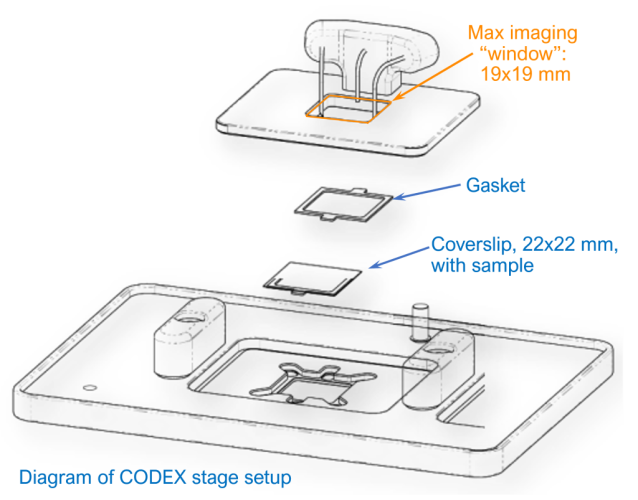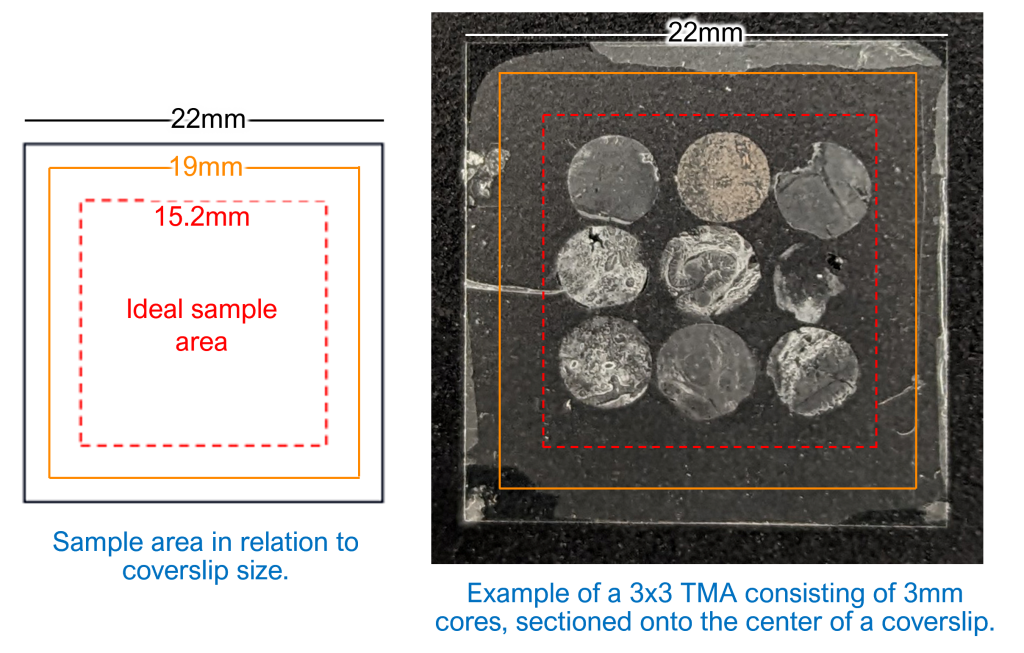CODEX technology is compatible with FFPE and fresh frozen tissue samples. The ITR will collaborate with the investigator to generate sections of the investigator’s samples, and there are some parameters that the investigator should keep in mind.
Due to limitations of the microscope, sections need to be adhered onto 22x22 mm, #1.5 coverslips. Moreover, the ideal imaging area is 15.2x15.2 mm in the center of the coverslip, though the permissible imaging area is 19x19 mm.
Best practices: ensure that the tissues or TMAs are embedded in a manner that will fit into the 15.2x15.2 mm area during sectioning.


The ITR will provide poly-L-Lysine or VECTABOND-coated coverslips. Final FFPE sections will typically be 4-5 µm thick, while fresh frozen tissue sections will be 5-8 µm thick. Please note that the PhenoCycler cannot accommodate sections ≥ 10 µm in thickness because the microscope requires thinner sections for its autofocus functionality.
Consider the following factors when deciding on your sample number and designing the sample layout:
Reducing the total number of coverslips will reduce the amount of antibody used and will also result in lowering the cost associated with performing PhenoCycler runs on the entire experiment.
Combining multiple experimental samples onto one coverslip (e.g. in the form of a TMA) is one potential avenue of reducing the number of coverslips in your study. Please consult us to find out whether this is possible for your project and if we can assist.
We encourage including control tissue in a potential TMA; for example, tonsil tissue is commonly used as a positive control for immune markers. This will aid us in better scoring positive and negative signal. In the event that including control tissue on the same coverslip is not possible, we will stain an additional control tissue coverslip and perform a separate PhenoCycler run as close to the original run as possible.
The PhenoCycler is primarily a discovery instrument. While it can image a high number of markers, please note that it may take about 2-3 weeks to image and process 5 coverslips, depending on the parameters of the project.